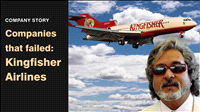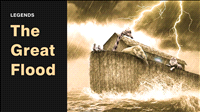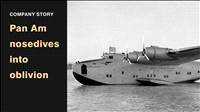History of hovercraft Part 3 | Industry study | Business History
By Kiron Kasbekar | 23 Dec 2023
In Part 1 of the hovercraft story, I spoke about the early attempts to make vehicles that could move on a cushion of air. Over water bodies and over land.
I also talked about how Christopher Cockerell invented the hovercraft but could not initially get the funding he needed to launch these craft in the market. And then how he got some funding from Britain’s National Research Development Corporation, to enable him to collaborate with aerospace company Saunders-Roe to build the first hovercraft, the SR.N1.
In Part 2, I spoke about the new models of hovercraft that came out, how they grew in size and were used as ferries across the English Channel. How their civilian use dwindled after the Channel Tunnel was built in the late 1990s, and how these craft began to be used for military purposes.
In Part 3, today I shall talk a bit more about the military plans for hovercraft, and about the other, mainly civilian, uses of hovercraft.
The 1980s saw further advancements in materials, propulsion systems, and controls in hovercraft, all of which improved their efficiency and capabilities.
The British Hovercraft Corporation’s AP1-88 and AP1-88-280 models demonstrated enhanced stability, payload capacity, and maneuverability. The Griffon 2000TD hovercraft offered amphibious capabilities and versatile transport options, appealing to various industries.
Hovercraft have found some niche applications, including ice-breaking, polar research, and tourism in Arctic regions. The Hovertravel Solent Express, which was founded in 1965 and commenced operations in the same year, continues its service connecting towns along the British coast. The company now runs a high-speed passenger service between England and the Isle of Wight, 5 miles from the Hampshire coast.
In the 1980s, the huge, 57-meter Russian ZUBR class hovercraft became the biggest hovercraft to be made, capable of carrying three army tanks (or hundreds of troops) at speeds of up to 60 knots.
The US used hovercraft in Vietnam. At least six hovercraft were used by American combatants to navigate Vietnam’s coast and river system. They were withdrawn after they were found to be vulnerable to enemy fire from the shores.
Hovercraft have found niche applications, including polar research, icebreaking, and tourism in Arctic regions. They have found use in disaster response scenarios due to their ability to access disaster-stricken areas quickly.
Innovations in hovercraft technology continued in the early 2000s. Hybrid propulsion systems have been tried out, integrating conventional engines with electric components for improved efficiency and reduced emissions.
However, challenges persist, including noise concerns, limited payload capacity, and high operational costs.
Research into advanced materials, such as carbon composites, has contributed to weight reduction and improved performance. Meanwhile, the introduction of smaller recreational hovercraft catered to enthusiasts seeking leisure activities on water and in marshy terrain.
The 2010s marked a renewed interest in hovercraft technology, driven by sustainable transportation solutions. Electric and hybrid propulsion systems gained traction, aligning with global efforts to reduce emissions. The renewed focus on green technologies led to the development of electric hovercraft prototypes that caused reduced noise and lower environmental impact.
As we move into the middle of the 2020s, hovercraft technology continues to be improved. Continued advancements in materials, propulsion systems, and automation technologies are likely to be the areas in which we should see some further innovation.
So which countries are using hovercraft the most?
The countries with the largest number of hovercraft, according to a 2021 report by Mordor Intelligence, are: the US, Russia, China, the UK, and France. These countries use hovercraft for military as well as civilian purposes.
Let’s look at the military uses.
The Russian Navy operates the world’s largest fleet of military hovercraft, including the Zubr-class landing craft, which can transport up to 500 troops and 50 tanks. Russian hovercraft are used for a variety of missions, including amphibious assaults, coastal defense, special operations, and search and rescue.
The US military has tried out advanced hovercraft designs, including stealth variants.
The US Navy and US Marine Corps operate a fleet of hovercraft for a variety of missions, including amphibious landings, maritime patrol and interdiction, search and rescue missions, and humanitarian assistance and disaster relief.
The Chinese Navy operates a growing fleet of hovercraft, including the Type 722A hovercraft, which is comparable in size and capability to the US Navy’s LCAC hovercraft. Chinese hovercraft are used for a variety of missions, including amphibious landings, maritime patrol and interdiction, and search and rescue.
The UK’s Royal Navy operates a small fleet of hovercraft for maritime patrol and interdiction missions. The Royal Marines also operate a number of hovercraft for amphibious landings.
The French Navy operates a small fleet of hovercraft for maritime patrol and interdiction missions.
Other countries operating a significant number of hovercraft include: South Korea, Japan, India, Iran, Greece, Singapore, and Malaysia.
India and the UK have begun negotiations to launch a collaboration project to design high-performance next-generation hovercraft. The aim is to manufacture versatile craft to transport troops and equipment in amphibious missions.
India’s coastal defenses have improved significantly with the deployment of Griffon Hoverwork 8000TD hovercraft by the Indian Coast Guard since 2001, giving it the capability for rapid ship-to-shore movement.
So far India has been assembling completely knocked-down (CKD) kits imported from Griffon, with no local manufacturing involved.
The existing models being used in India can transport up to 70 troops or 10 tons of cargo and move at a maximum speed of 45 knots. The coast guard now operates 18 of these craft; and plans to retire six of them within the next two years.
Now both the Indian Coast Guard and the Indian Navy are actively exploring the acquisition of military-grade hovercraft.
In India, Iran and some other countries hovercraft are used to deal with smugglers sneaking in from the sea.
But hovercraft have other important uses.
In several countries they are used as a simple means of transport. Now hovercraft are not usually the best way to travel. If a car, bus or truck can travel on a road or a boat can be used to navigate over water, hovercraft would be the least desirable option.
But they are versatile craft that can move over water, ice, mud, sandbanks, and even across small rapids. They do not get fouled, as propeller-driven boats can get, along waterways covered with reeds and weeds. They can move on land and on stretches of very shallow water where propeller-driven boats cannot go.
So hovercraft are well-suited for passenger and cargo transportation in areas with difficult terrain or shallow water, such as coastal areas, rivers, and lakes, and areas that are inaccessible to conventional vessels.
They are fast and maneuverable, making them ideal for patrolling and interdiction operations. And they can carry a large payload of troops and supplies.
So, to sum up, the uses of hovercraft include the following:
- Search and rescue: Hovercraft are used in search and rescue operations, particularly in regions with extensive marshes, mudflats, and shallow waters, icy expanses like the arctic tundra regions of Russia and Canada, where traditional rescue boats are unable to ply.
- Coast guard and maritime operations: Many coast guard agencies use hovercraft for patrolling to stop smugglers and for rescue operations in coastal regions. They can quickly reach areas that are difficult to reach by other craft.
- Amphibious forces: Some military forces still deploy hovercraft for amphibious operations, where they are utilized for troop and equipment transport during beach landings or riverine operations.
- Icebreaking: In regions with icy or frozen waterways, hovercraft are used for icebreaking to keep navigation channels open for shipping and transportation.
- Commercial transportation: Some regions use hovercraft for commercial passenger transportation, especially in areas with a mix of water and land routes, like river deltas and marshlands.
- Environmental conservation: Hovercraft are employed in environmental conservation efforts, particularly in fragile ecosystems where conventional boats might damage the environment.
- Humanitarian and disaster relief: Hovercraft are used for rapid response in disaster-stricken areas with flooded or inaccessible terrain. They can deliver supplies, provide medical assistance, and evacuate people from affected areas.
- Scientific research: Scientists use hovercraft to access remote and sensitive environments, such as wetlands, estuaries, and marshes, without causing ecological damage.
- Industrial and survey operations: Some industries, like oil and gas, use hovercraft for surveying and maintenance in offshore or hard-to-reach areas.
- Tourism and recreation: In some tourist destinations with challenging terrain, hovercraft provide unique experiences for sightseeing and eco-tours. Hovercraft are also used by a number of private companies for commercial and recreational purposes. They are also used for adventure and for expeditions, and for search and rescue missions in icebound expanses in many countries, such as Canada.
And, hey, if you can have autonomous vehicles on city roads, why not have autonomous hovercraft for surveillance, reconnaissance, and transport applications? That’s happening.
So, while there are more economical means of transport for most other types of uses, hovercraft are a big savior in certain situations in which most other modes of transport fail miserably.
That is what will keep hovercraft alive for some time to come. The journey of hovercraft technology that began in 1960 has remained on course. So far.
Well, on that note, I have come to the end of this video.




























